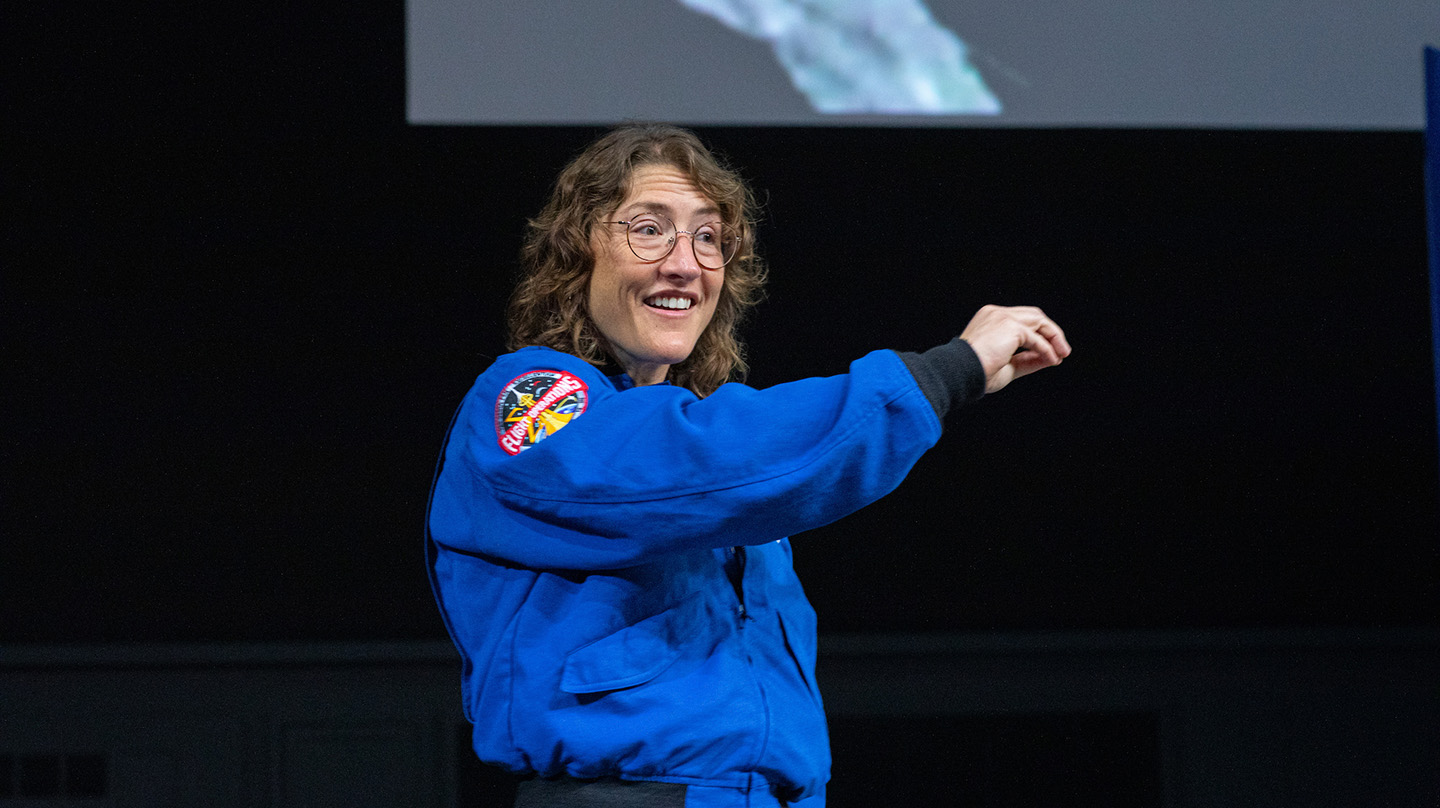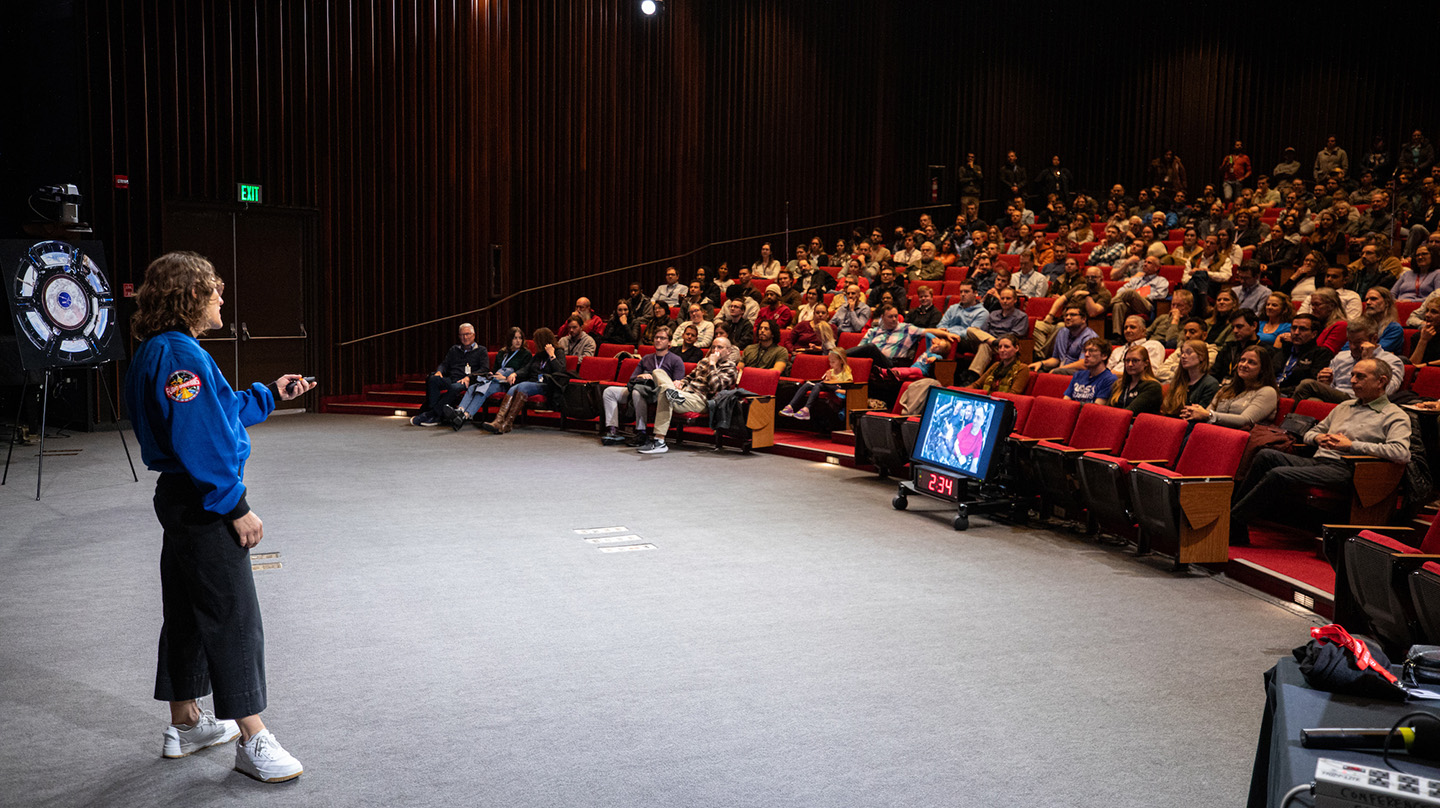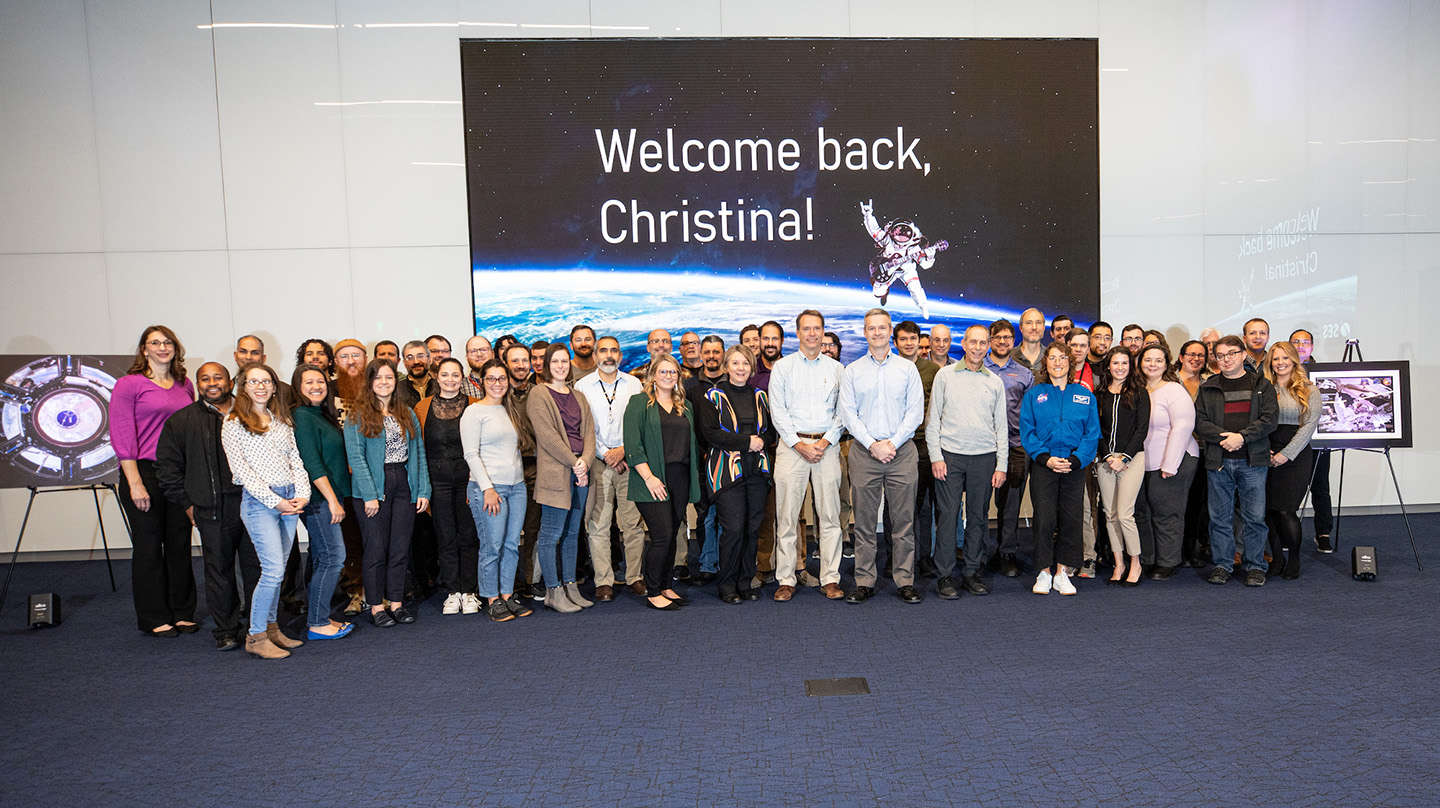News
Shooting for the Moon: Christina Koch’s Historic Journey From Johns Hopkins APL to Space
As Christina Koch watched NASA’s Juno mission launch in 2011 from the Cape Canaveral grandstands in Florida, she thought that moment was the closest she’d get to fulfilling her dream of going to space.
The former electrical engineer at the Johns Hopkins Applied Physics Laboratory (APL) worked on Juno’s Jupiter Energetic Particle Detector Instrument (JEDI) during her two-year stint, leaving her feeling satisfied knowing the detectors would contribute to space exploration.
In December, Koch returned to the APL campus in Laurel, Maryland, to deliver a colloquium on human spaceflight. Not only had she fully realized her dream of traveling to space, but she now owns the record for the longest single spaceflight by a woman in human history at 328 days. She is one of four NASA astronauts chosen for the agency’s Artemis II flight test to the Moon.
“I have a lot of fond memories working at APL,” Koch said after her talk, in which she described her career path from the Antarctic to the International Space Station (ISS). “I had a lot of great mentors and great friends here. The culture here is very positive, encouraging and super intellectual, which I love.”
From APL to ISS
Koch started her career with roles at NASA Goddard Space Flight Center and the United States Antarctic Program, which included a yearlong stay at the South Pole.
In 2007, she joined APL as an electrical engineer and worked on JEDI, used on NASA’s Juno mission to explore our solar system’s largest planet. Koch also assisted with the development of the Radiation Belt Storm Probes Ion Composition Experiment, used on the Van Allen Probes, which provided crucial insight into Earth’s radiation belts.
Former APL colleagues recall Koch’s deep knowledge of electrical engineering and physics and her positive, can-do attitude.
“It was a pleasure to work with her,” said Chuck Schlemm, a space systems engineer who teamed with Koch when she worked at APL. “Her mindset was that everything had a solution and she was working on it.”
Barry Mauk, who served as lead co-investigator on JEDI, said Koch played a big role in designing and implementing calibration systems and managing a particle accelerator capable of testing the instrument’s sensors in four dimensions.
“It turned out to be absolutely critical for calibrating,” recalled Mauk. “Her staging device made that so much easier.”
Koch resumed remote scientific field work with stops in Antarctica and Greenland before NASA accepted her into the astronaut training program in 2013.


